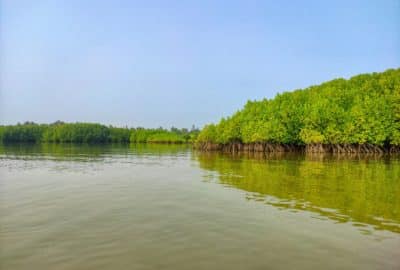Our mysterious ocean floor
Thursday 5th Dec 2019, 12.30pm
Oceans cover more than 70% of the Earth’s surface, yet only 15% of the ocean floor has been mapped in detail. Much remains unknown, including the location of potentially hundreds of thousands of seamounts, which can be hazardous to navigation. Scientists at the University of Oxford are working with others to compile the most comprehensive analysis of the ocean floor yet.
Our watery planet
The oceans cover more than 70% of our Earth’s surface, yet we know little about the seafloor and what lies beneath it. The water cover makes studying the deep ocean one of the most technically challenging environments on Earth for scientists. Conventional remote sensing techniques (e.g. radar) penetrate only the first few metres of the water column so we have to rely instead on acoustic and potential field methods, coring and dredging, and drilling using well-equipped scientific research ships.
Ever since the first research expedition onboard HMS CHALLENGER in the 1870s, scientists have been fascinated with the ocean floor. The CHALLENGER scientists used pre-stressed hemp rope and lead weights to measure the depth of the ocean floor. Each ‘sounding’ took upwards of several hours to carry out! Results showed that away from the edges of the continents and the flanks of islands, the ocean floor was remarkably smooth and featureless.
How can we examine the ocean floor?
Today, water depth is measured continuously on ships using single beam echo sounders. A hull-mounted transducer transmits an acoustic beam; the time it takes to travel to the seabed, reflect off it, and travel back to the transducer is measured and used, with velocity of sound in water, to calculate depth. Sonar data first revealed the ‘physiography’ of the seafloor at the mid-ocean ridges, transform faults and fracture zones and deep-sea trenches and provided some of the critical evidence for the existence of seafloor spreading and continental drift, which in the late 1960s formed the framework of plate tectonics.
Most modern sonar systems use not one but many transducers that form hundreds of beams and while a ship is steaming they can map a width of seafloor up to 2.5 times the available water depth. Data acquired with such swath systems have yielded startling new images of the seafloor, especially at submarine volcanoes where they have revealed volcanic cones, calderas with ring faults, central mounds and large collapse structures. Together swath data show that the seafloor is dynamic – constantly changing through processes such as magmatism, faulting and landsliding.
What are seamounts?
One current mystery of the sea are ‘seamounts’ (underwater mountains) that litter the ocean floor. Rising upwards of 4 km above surrounding seafloor depths, most seamounts are volcanic in origin. Some have flat tops and represent former islands that were trimmed by wave action and subsequently sank below sea-level. Many have coral caps and some have fringing reefs with lagoons which enclose remnants of an ancient volcano. Some seamounts form linear chains that progressively increase in age away from a deep mantle hotspot so they trace out the motions of Earth’s tectonic plates. Most, however, are isolated and show no obvious link to hotspots. Unfortunately, only ~10-15% of the ocean floor has been swath mapped and so we do not know how many seamounts are growing upwards or are sinking downwards or indeed how many there are in total. What we do know is that seamounts act as oceanographic ‘dip sticks’ (they create local turbulence in the water column), biodiversity hotspots (some of our favourite fish are found on the top of seamounts) and as barriers for earthquakes (they are known to hold up earthquakes when carried into a trench by plate motions), and they are hazards for navigation, submarine landslides and tsunami wave propagation.
We believe, based on an analysis of echo sounder data along more than 5000 ship tracks, that there are a few hundreds of thousands of seamounts rising upwards of 0.1 km on the ocean floor. There maybe as many as a few tens of thousands of 1 to 1.5 km high seamounts that remain to be discovered. It is urgent we find them! Fortunately, through the focused efforts of Seabed 2030 project collaborators in Japan, Europe and the US, interest is accelerating in the idea of swath mapping the entire ocean floor.





